On Sunday, the team met Daniel Bentle, CEL associate director, at the Florence train station after two train rides from Verona. That afternoon, we took a stroll through the city where we were privileged to witness a historic flag throwing presentation outside of the Palazzo Vecchio. 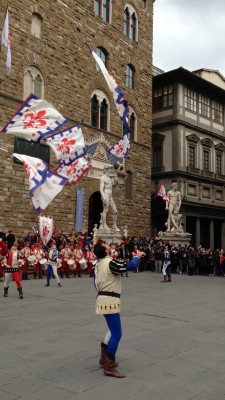
Later that afternoon, we were to meet with Sauro, our Artex connection. Little did we know— the man is a legend. Some say that he once asked for his wife to be completely covered in the best (and incredibly expensive) leather in Florence. Some say he frequents the discoteque at least four times a week. Still others claim he has a gold leaf tattoo in the shape of the local Duomo on his arm. All we really know is that, Sauro Servadei, his wife Maria, and their daughter Chiara are some of the most welcoming and happy people you could ever meet. (Their dog, Titta, is also a cutie.)

Pausing by the Arno with our host Sauro.
That evening, Sauro and Maria provided us with a wonderful, and extensive, home-cooked meal. There was an antipasto platter of meats, liver, and cheeses, along with Prosecco, followed by what we thought were the main courses of pasta and a potato dish with red wine. In actuality, it was the primi piatti (literally translating to first plate).
It was soon followed by the secondi piatti (second plate) of a dish reminiscent of meatloaf and rosemary potatoes. Just when we thought we couldn’t have another bite, out came Maria with il dolce, a bread dessert called Colomba and chocolate covered nuts. The evening was full of good laughs and tips from Sauro on the best places to eat in Florence; after all, that is usually the most important thing to learn when visiting a new city!

Mr. P.E. Peroni
The next morning (Monday), the team headed to Artex bright and early to meet with Sauro and our other Artex connection, Maria Elena Angeli. The morning was spent much as the evening was, with the team listening to Sauro talk about the city, the artisans, and the beauty of Italy. After a morning filled with lively discussions, we headed to Peroni, a local leather workshop known throughout Florence for its high-quality leather goods.
P.E. Peroni (yes, his initials and last name spell peperoni) founded the workshop with his brother, Roberto in 1956. Peroni spent the afternoon showing us around his workshop and sharing with us the history of the company and demonstrating his handicraft still performed in the traditional way. Although he is retired, several team members were able to get the once-in-a-lifetime experience of Peroni personally embossing their initials onto his coin purses.
On Tuesday, we met with the president of Artex and a representative from the innovation and development division. Following that, we listened to interesting presentations from two Italian trading commissions, CNA and Confartigianato.
In the evening, we had dinner at an excellent trattoria. The amount of food consumed was similar to Sunday night. Thankfully, we were able to walk off the food during a personalized guided tour by the legendary Sauro himself. In the late hours of the night, we retired to our accommodations, heavy with excellent Italian food, wine, and history.
Josie Gutierrez,MBA’15 contributed this post on behalf of her CEL team.
For more information on Artex or Peroni, please click on the links below.
Artex: http://www.artex.firenze.it/en
Peroni: http://www.peronifirenze.it/




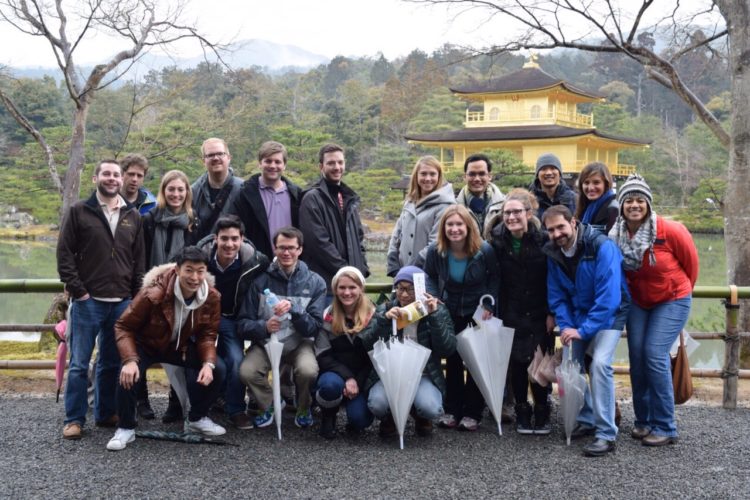
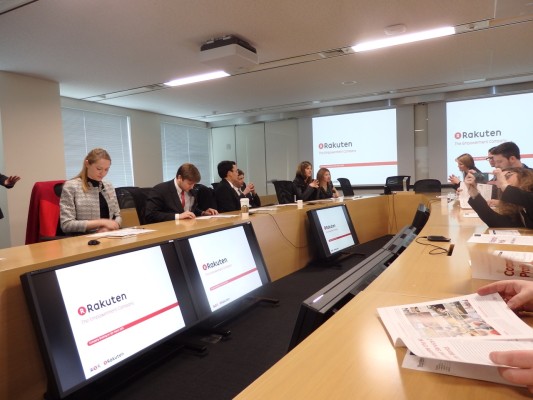 “I enjoyed learning about Rakuten and the vast array of companies and industries it is involved in. Rakuten is rapidly expanding, and since studying it, I have seen Rakuten multiple times.
“I enjoyed learning about Rakuten and the vast array of companies and industries it is involved in. Rakuten is rapidly expanding, and since studying it, I have seen Rakuten multiple times.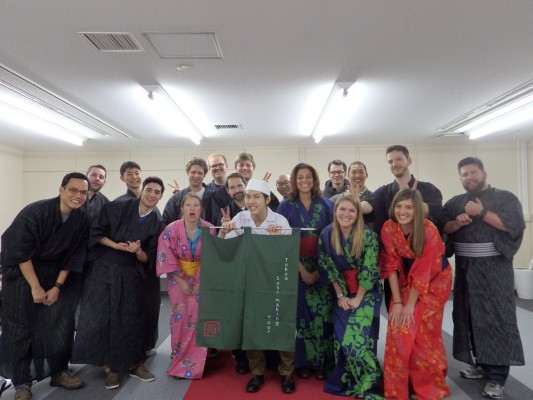 “The cultural experience is something that could not have been learned in a traditional course. Japanese business culture is very formal and polite. The extent to which respect and formality are important in the culture could not be experienced in a course. This may help me in my business career because I plan on working in M&A consulting. Many acquisitions are international, and understanding other cultures will help me interact with international professionals when I am working on these deals.” Louis Milone
“The cultural experience is something that could not have been learned in a traditional course. Japanese business culture is very formal and polite. The extent to which respect and formality are important in the culture could not be experienced in a course. This may help me in my business career because I plan on working in M&A consulting. Many acquisitions are international, and understanding other cultures will help me interact with international professionals when I am working on these deals.” Louis Milone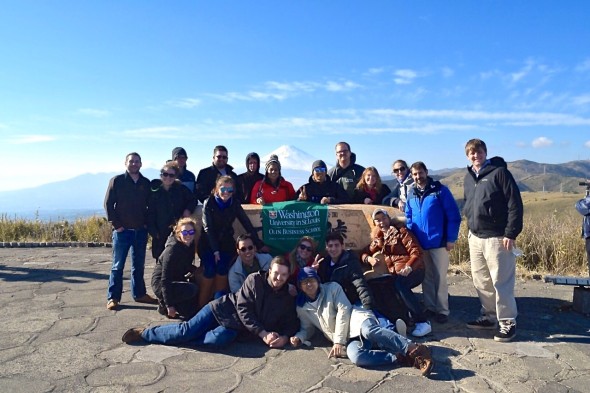 “Attention to detail is a trademark of Japanese companies and their employees in everything they do. This transcends relationships between companies and their customers as well as business to business relations. It applies to manufacturing processes where every detail is attended to and perfected; products are thought out carefully and done in best way and quality possible including the packaging and final presentation to the customers; when dealing with partners such things as little gifts for visitors always take place; attention to details and dedication also take place in everyone’s daily life.” Alexandra (Sasha) Sukhareva
“Attention to detail is a trademark of Japanese companies and their employees in everything they do. This transcends relationships between companies and their customers as well as business to business relations. It applies to manufacturing processes where every detail is attended to and perfected; products are thought out carefully and done in best way and quality possible including the packaging and final presentation to the customers; when dealing with partners such things as little gifts for visitors always take place; attention to details and dedication also take place in everyone’s daily life.” Alexandra (Sasha) Sukhareva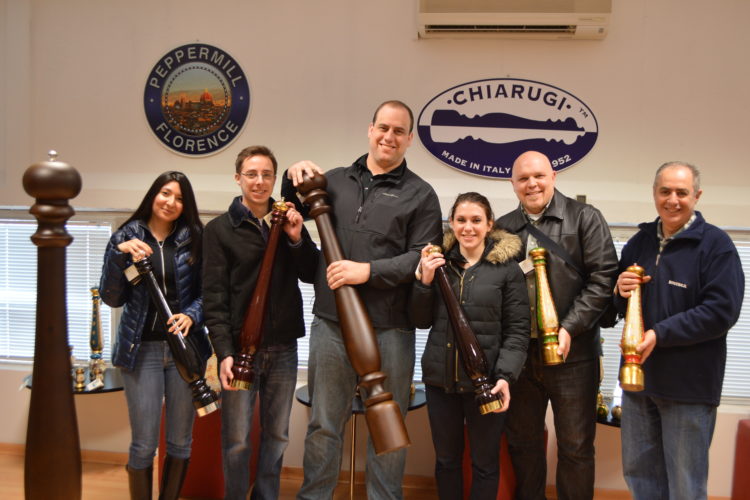
 The first company, IVV, is the largest glass manufacturer in Europe. They make the majority of their products completely by hand, and the results were quite impressive. The company makes large vases, colorful flowers, and nearly any tabletop object imaginable. The factory itself was also a sight to be seen; Professor Sergio Chayet would have refused to leave if he had been here.
The first company, IVV, is the largest glass manufacturer in Europe. They make the majority of their products completely by hand, and the results were quite impressive. The company makes large vases, colorful flowers, and nearly any tabletop object imaginable. The factory itself was also a sight to be seen; Professor Sergio Chayet would have refused to leave if he had been here. Our final visit was to Capecchi Home Linens, located in Pistoia. The company has been in the same family for three generations and we had the opportunity to tour the facility with its current owner. The company imports high quality cotton from Egypt and the Middle East, and then dyes, embroiders, and finishes the sheets, pillow cases, and other linen goods in house.
Our final visit was to Capecchi Home Linens, located in Pistoia. The company has been in the same family for three generations and we had the opportunity to tour the facility with its current owner. The company imports high quality cotton from Egypt and the Middle East, and then dyes, embroiders, and finishes the sheets, pillow cases, and other linen goods in house. The company produces only when orders come in, and they offer their customers the ability to customize the products to a large degree. Speaking with the owner after the tour, he indicated that he does not want to become a high volume producer like some manufacturers in China. In fact, his goal was simply to add one new customer per year, so long as this customer builds a relationship with him.
The company produces only when orders come in, and they offer their customers the ability to customize the products to a large degree. Speaking with the owner after the tour, he indicated that he does not want to become a high volume producer like some manufacturers in China. In fact, his goal was simply to add one new customer per year, so long as this customer builds a relationship with him.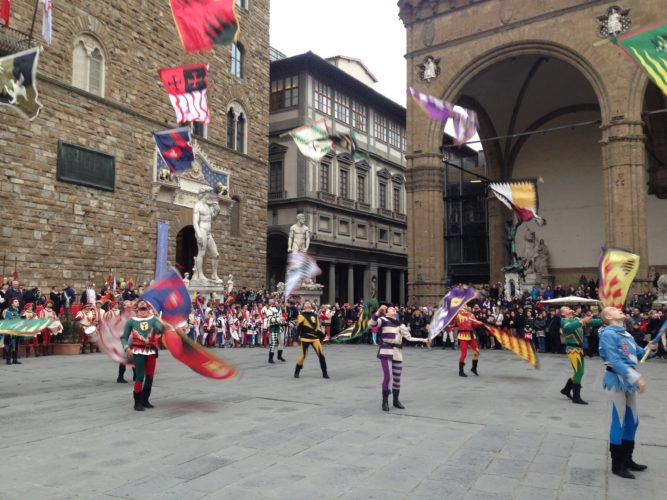




 Mountains of music industry data exist, but what information will be meaningful to Tunespeak? We’ve ultimately narrowed our focus a great deal in order to answer this critical question.
Mountains of music industry data exist, but what information will be meaningful to Tunespeak? We’ve ultimately narrowed our focus a great deal in order to answer this critical question.